INNOVATION ACCELERATOR – WAYFI FOR SMART ARCHITECTURE SPACES (PART 1)
January 31, 2018
Series Overview
The Innovation Accelerator program is a global initiative where creative problem solving using design thinking is inspired, informed and incited via a passionate community of innovators, robust tech platforms, and a supportive partner ecosystem. The Accelerator consists of program services for exploration, discovery, collaborative creation, team building, business modeling, design meditation and mindful engineering to develop novel solutions to real-world problems.
After operating the Accelerator for two years, the program is gearing up to bring these accelerators for innovation to broader audiences so that their potential impact can be realized. The Accelerator team is currently developing a catalog where the concepts are introduced so that visitors can learn about the art of the possible using each accelerator in their respective problem spaces and domains. The Accelerator team is excited to see how enterprises and communities express their interest in incorporating these accelerators into their own initiatives to make something great.
This article begins a series introducing the winning concepts in Innovation Accelerator 2017. A brief tour of each design is provided along with insights into the team’s experience in the Accelerator program. First up is the winning team, Team Columbus, with their innovative WayFi concept.
Team Columbus
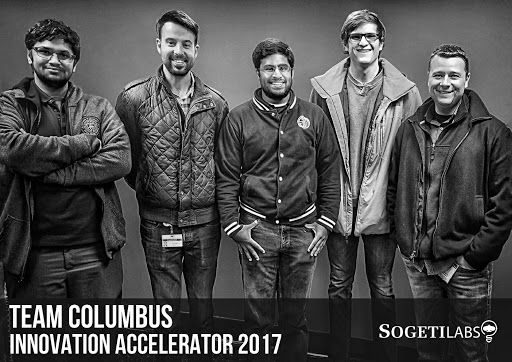
WayFi Design Thinking
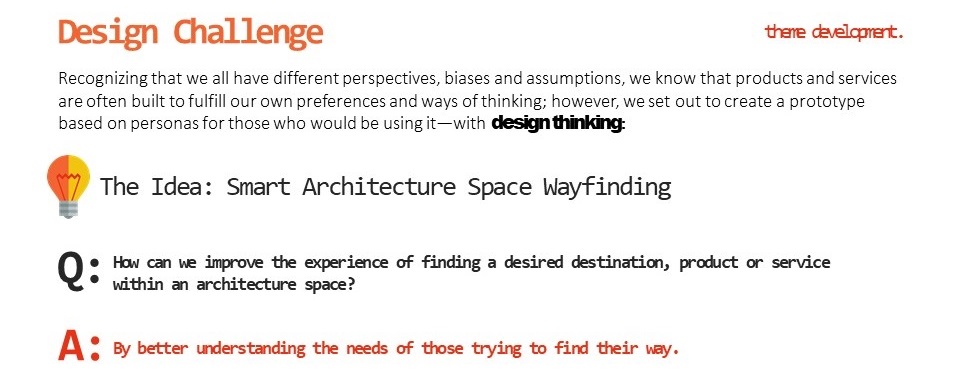
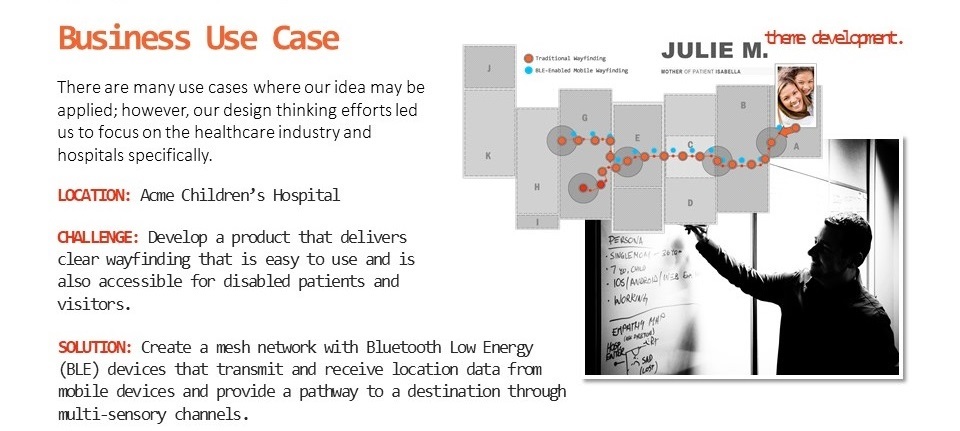
WayFi Concept
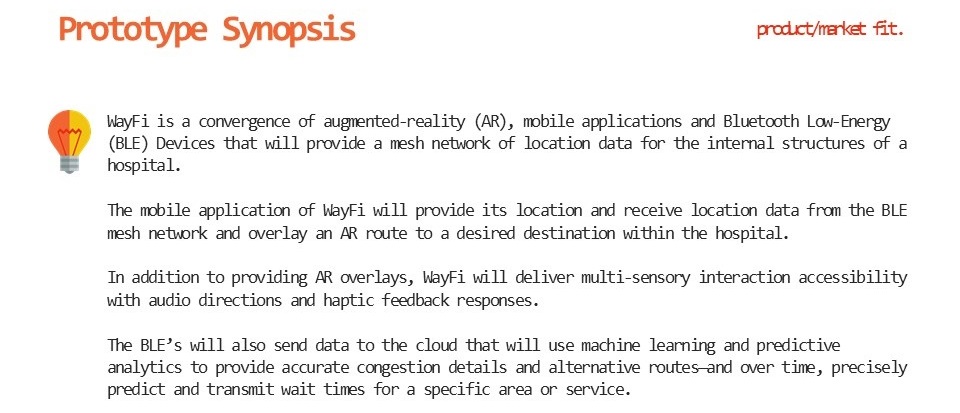
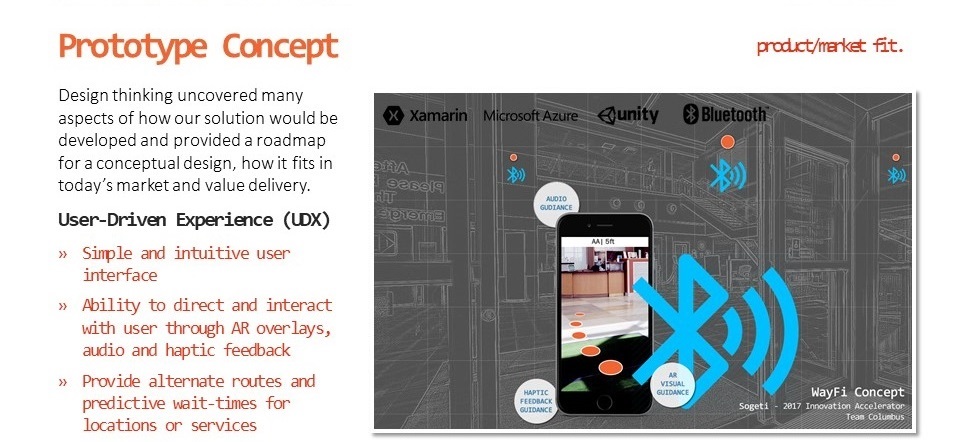
WayFi MVP
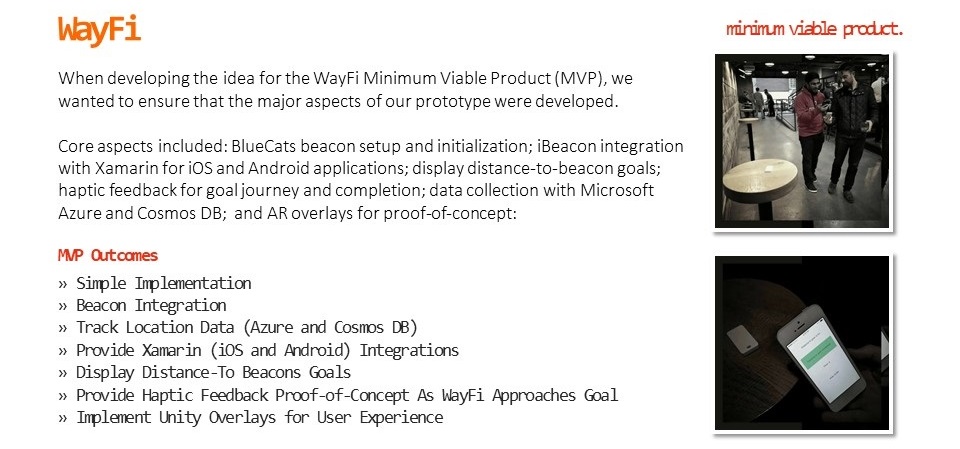
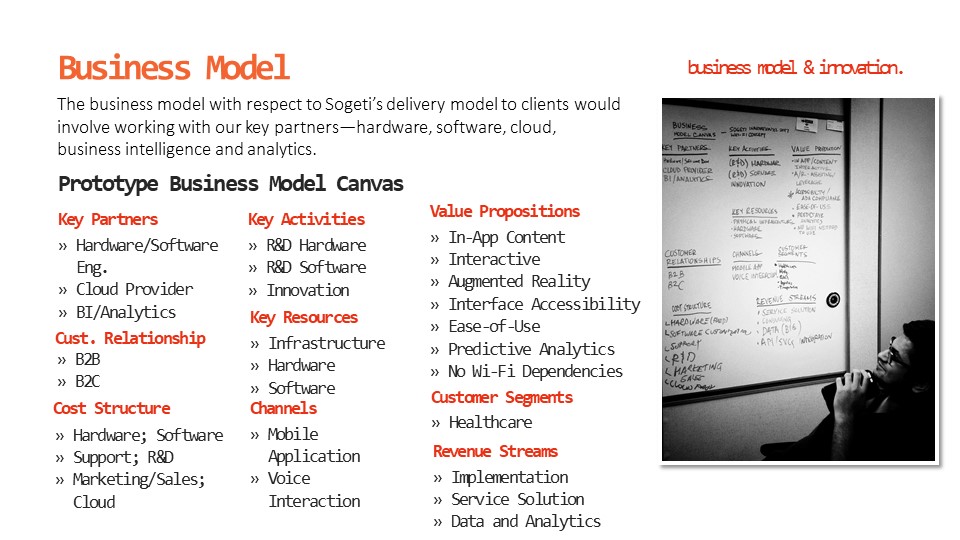
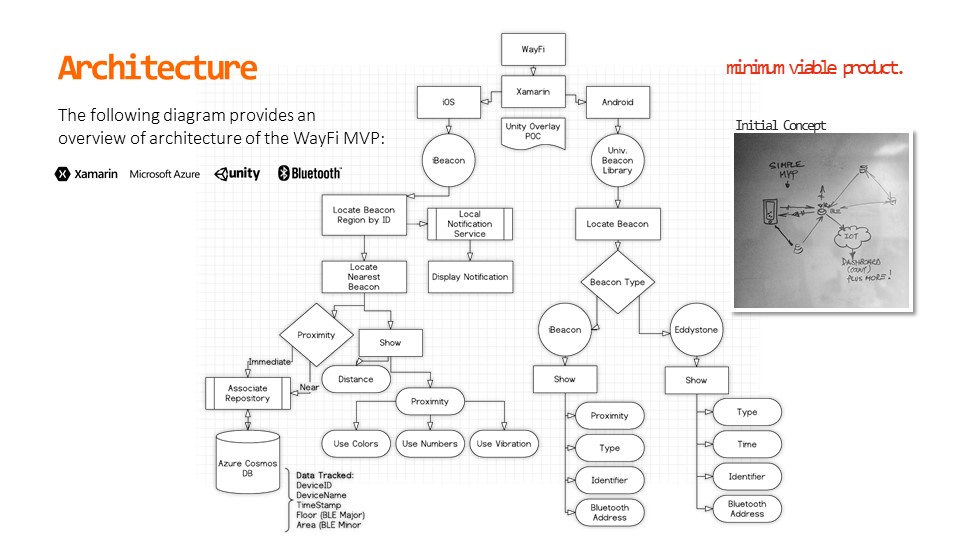
Accelerator Team Q+A
What was your team’s experience like innovating in the Accelerator?
The accelerator offered comprehensive guides and support for developing an end-to-end solution ranging from prototyping via Idea Storming to developing a GTM strategy. The lynchpin that put everything together was the use of Design Thinking. The knowledge our team acquired from the Innovation Accelerator can be applied to real-world business problems — and we are taking this message to our unit leadership, fellow consultants, and clients.
How did design thinking guide the team’s creative collaboration for prototyping innovation?
During the Idea Storming phase, we stumbled upon a quote that quickly became our mantra for the Innovation Accelerator. The quote by Anaïs Nin states quite simply: “We do not see things as they are, we see things as we are…” Upon reading this, we came to the realization that we all have different perspectives, biases and assumptions when looking at something. Recognizing this, we set out to use Design Thinking to develop a user-driven, evidence-based solution. The process of continuous ideation by creating problem statements, value propositions, developing personas, and empathy maps helped shape every aspect of our solution. Our team is continuing to leverage what we’ve learned in the Accelerator and are finding new ways to improve our solution beyond the scope of the Accelerator.
What is the importance of developing a business model that supports the innovation concept?
An organization’s business model and (business) strategy must align with its innovation strategy for it to expand. Collaborative models of approach for innovation such as Design Thinking and open innovation exercises are the pillars of what a business should embrace for a healthy entrepreneurial spirit. The convergence of existing and new technologies should drive innovation — and recognizing employees as key partners for innovation is vital. Organizations that recognize the importance of this gain a significant competitive advantage as simply funding research and development is not enough.
How did the technology platforms power development of MVP prototypes?
In business today, data is a crucial aspect of any technical solution. As such, whatever platform chosen should align with the vision of making data a first-class citizen. Microsoft Azure does just that and was the top choice for our team. The cloud-based platform provides us with a simple and scalable way to collect data within our solution by laying the groundwork to easily integrate various frameworks and libraries we choose to implement. Another driving factor in our decision is that Azure provides elegant integrations with machine learning services that vastly open the potential and the sustainability of our solution.
How did you approach product/market fit?
During the ideation phase of the Accelerator, we were drawn to looking at a solution for internal wayfinding. We began researching current solutions and found that there were large gaps between the vision of internal wayfinding and viable implementations. Much of our team had experience within the healthcare space (specifically hospitals) and we recognized that not only is there a strong desire but also a need for innovative wayfinding. As such, it was quite natural for us to use a hospital for our use case.
Does the MVP concept have potential for disruption or creation of new markets?
Given both the current market and the capability of existing solutions, we can respond with a resounding YES! WayFi absolutely has the potential to disrupt and create an entirely new market based on both convergence of existing technologies (such as Bluetooth beacons, mobile and cloud platforms) and development in leading edge technology (like Li-Fi). A continuous innovation strategy being the key here, both our solution and approach disrupt conventional business models by placing importance in aligning the focus of both business and innovation strategies to construct something that provides a value that is unique, innovative, and useful.
If you’d like to learn more about WayFi or the Innovation Accelerator, send your inquiry to sergio.compean@us.sogeti.com.

 English | EN
English | EN 